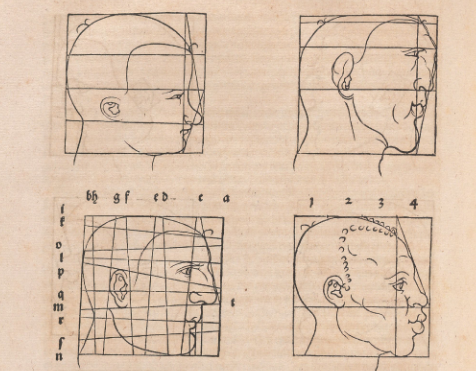3,161 words
In a series of articles that will follow I will examine the defining issue of our cause, which is essentialism, and in particular, essentialist identities. In this first instalment, I will consider how Modernity substitutes genuine essences with counterfeit ones and examine how this relates to Plato’s theory of forms. I will then recapitulate how our racial identity was once a core component of Western civilization, and what its loss means for us. This article will then conclude by a comparison between racial versus genetic essentialism. In a follow-up article I will go into more depth on how we may rediscover our identity through genetics, and in the final instalment I will cover common counter-arguments against essentialist identities and other practical matters.
The photo above depicts a naturalization ceremony of new American citizens. Similar scenes are taking place regularly across most of Europe and the Anglosphere. When we look at images like this we find them instinctively uncomfortable, sensing that these people could never become genuine Italians, Swedes, or Americans.
If prompted to justify why this is so, there is an obvious answer: The individuals in the photo are not white, therefore they are not like us. However, if probed for a deeper explanation for what is meant by “not like us,” this task becomes much more challenging. If we were then asked to point out exactly what is missing, or if there was anything that these people could do to become like us, many of us would find it impossible to articulate our feelings. We would be simply left with an unshakable sense that they are just essentially different, and that there is nothing they could do that would ever change that.
This notion of “just different” is the defining issue of our cause, which stems from our belief that our identities are destined, not chosen. Rejecting such elective identities is what makes our position utterly incompatible with the rest of the political spectrum. This is why we are cultural pariahs in polite society. We are outcasts, as we object to a fundamental assumption of Modernity: the idea that anyone can become anything if they just really try.
But for us, that is just not good enough. This distinguishes us even from civic nationalists, who believe that if you dress these aliens like us, get them to speak our language, and teach them to sing our national anthems, then they become just like us. Or maybe even better! However, we are not fooled by such superficialities. In fact, the closer the approximation gets to the real deal, the less comfortable we become. As for many of us, the more the fake comes to resemble the genuine article, the creepier and more uncanny they will appear. Those with a keen perception have the same kind of revulsion to such counterfeit Europeans as they have to CGI humans or transgendered individuals, examples that I will now use to illustrate certain key processes of Modernity.
If you look at the above images, they look almost right, and from a distance they may even fool you. However, upon closer inspection, there is something missing. The fact that they are so close to life makes them all the more unsettling and grotesque. Something about their dead eyes gives them away as impostors; this CGI creature is not an actual human being, and that person wearing makeup is not a real woman. What is missing is something intangible, yet vitally important. What they are both lacking is what makes something truly genuine: a core essence.
What is a core essence? What is essentialism? To answer these questions, we have to return to the very roots of the Western tradition, to Plato’s theory of forms.
According to Plato, our lived experience is a world of appearances, like shadows on the wall of a cave. These shadows are cast by objects that we cannot see. Underneath this world of appearances and all the superficial detail and noise, however, there are purer forms hidden from our view. These unseen forms are the true essences of the objects that we see. Thus, an essence is what defines a thing to be that thing in particular and not something else. An essence is its core, which is irreducible and absolute. It is what cannot be taken away or altered in any way without the object losing its meaning.

You can buy Greg Johnson’s From Plato to Postmodernism here
Plato’s theory of forms is usually explained via geometric primitives or inanimate objects like chairs. However, it also applies to living things, which takes us to biology, and within that, to taxonomy. Taxonomy’s goal is to recognize the latent forms in individuals, and using that to categorize groups of animals into a hierarchy like species, genus, family, and so forth. From this perspective, each individual animal is an instance of its species, which is its archetype or pure form. When applied to the animal kingdom, most people are relatively comfortable with this. They get less comfortable if it is pointed out that when we climb the tree of life to the top, we will find our own species among its branches as well. According to this insight, humans also have underlying true forms of which our individual person is just an imperfect instance.
You can probably see now why this is a problem for Modernity. If we have defined forms, then that would make us distinct from other types of peoples. Consequently, if different kinds of people had different forms, which are irreducible and essentially different, then that would also imply irreconcilable differences between groups. As conflict is just a realization of group differences, world peace and many of Modernity’s utopian ideals would then remain forever unattainable. As long as we retain our forms, humanity could never be amalgamated into a shapeless mass, which is the underlying reason why Modernity wants to strip our identities from us.
The modern solution to such essentialist barriers is to destroy all forms, or if that is not possible, then at least to pretend that they don’t exist. Modernists operate by taking something with a prior structure, such as religion, tradition, or conventional gender roles, and deconstructing it, block-by-block, chipping away at its outer layers. They wish to find that all such structures are like an onion, where there is nothing beneath its innermost layer — just emptiness, and there is nothing prior. No essences. No meaning. Once there are no distinct features left that can differentiate any aspects of reality, Modernists could then relax into a state of equality, realized as collective solipsism, which is their ultimate goal.
Looking at the first photo again, we have now developed a deeper understanding as to why we have found it so offensive. It insults us, because it is actually an existential threat. If Modernity can convince us that we have no distinct forms or identity, then it is not a problem if we get replaced by these people. It is not genocide if we get dissolved into a shapeless brown mass, if European culture ceases to exist, or if white people disappear from the face of the Earth. No harm done, as according to this modern view, we have never existed as a distinct form in the first place.
The Leftist modern project is one of anti-essentialism, and this goal animates their entire conduct. The next time you view objects of deconstructivist art, read Leftist literary criticism, or watch modern parodies of classic works, you will now see their true motivations. They want to deconstruct these prior structures to undermine their form and render all shapes indistinct. Once there is nothing in their way, they will then proceed to replace things of genuine substance with counterfeits: real actors with CGI characters, women with trans people, and real Europeans with those of foreign hearts.
What prevented this process from engulfing us until now? How come we could distinguish our shape from an amorphous humanity up until very recently? Before 1945, we Western men used to define ourselves by our race, which was seen as a discrete taxonomic category. You were of one race and not another. However, race was not only a taxonomic rank in biology, it was also a form of humankind’s appearance where each individual was considered to be a manifestation of these prior racial forms. Importantly, race provided a complete identity that covered everything from our skull shape, brain size, IQ, and personalities, even up to the level of civilizations one could create.
A key component of biological race was its discreteness, which helped to delineate the various groups of people. Races were conceived to be fundamentally non-overlapping types, and individuals with uncertain or “hybrid” ancestries were considered abominations that represented a degeneration of the pure form. These impure forms seemed to violate the laws of nature and also to undermine the validity of such Platonic notions of identity. This was a mistaken view that ultimately became the Achilles’ heel of the old race concept, which I will explore in much greater detail in my future articles.
Nevertheless, classical race was a keystone of Western civilization, and I cannot possibly do justice to it within the scope of this work. For those interested to learn more, I recommend John Baker’s 1974 book Race, which, although quite dated, is still a valuable resource.
Over the last few decades, the Left has thoroughly undermined and discredited the race concept for the reasons I have already explained. They had to do this, as our race was our protective armor, a shield which had to be taken from us so that our identities could be exposed to the elements and our dissolution could commence. You already know what to say if you are accused of “racism,” but now you also know the reason why this accusation is considered such a heinous crime. “Racism,” you see, is the crime of being perceptive. It is to notice the Platonic form in someone, and to elevate that form above their individuality. “Sexism,” “classism,” or any kind of “stereotype threat” — they all amount to this same offense: to discriminate the form in someone instead of treating them like unique snowflakes.
Today, “race” is asserted to be a “social construct” — a concept that is thoroughly anti-essential, something that can be deconstructed or reconstructed at will. Unfortunately, as far as popular perceptions are concerned, the Left has largely succeeded in disseminating this new definition. This is why I cautioned against the continued usage of this term, as this new “race” concept is now owned by the Left. They cry crocodile tears about how bad “racism” is, and claim that they wish “race” would no longer matter. But this is the very opposite of what they want. They actually thrive on their definition of “race,” as this has become their new rallying cry, superseding the old class concept. According to this novel definition, “race” is now an arbitrary category used to perpetuate oppression and systemic inequality, which provides their raison d’etre. Thus, their “race” concept is crucial for their purpose but is inimical to ours.
While they love “race,” genes represent a problem for Modernity. Just watch their faces darken as soon as genes are introduced into any discussion involving unequal outcomes. They sense that genes carry within them the potential seeds of their ideological destruction. And they are right to be concerned, as genes are a reminder that the modernist project is doomed to fail. Our history may be erased, our monuments toppled over, but our genes can never be abolished.

You can buy Greg Johnson’s White Identity Politics here.
Even though the Left has been winning culturally and politically, and they are still winning, in the field of science they have been practicing tactical withdrawal for the last two decades. Twenty years ago it was still considered controversial to suggest that IQ and DNA had anything to do with each other. Today, it is routine to predict a person’s genotypic propensity for cognitive abilities from a few drops of their saliva.[1] Their last remaining strategy is now to slow down the discovery of the social implications of such research. They try to hide this knowledge from the public by cloaking it in a veil of scientific and philosophical sophistry. I will expose these counter-essentialist arguments in the last instalment of this series, but for now, it is sufficient to say that all of these are only temporary countermeasures with a best-by date that has long since expired.
I will now turn to examine the general properties of genetics in more depth from a conceptual perspective, showing how they relate to essentialist identities and how that differs from classical notions of racial essentialism.
Individual genetic variants are small chemical changes that alter our blueprints and induce changes in the overall outcome. Thus, genes can be thought of as particles of fate which in aggregate confer deterministic properties to biological systems, to the extent that the traits in question are heritable. To explain the importance of this, there are three basic concepts in genetics that are relevant to essentialism and identity politics. The first two closely-linked concepts that I am discussing here are heritability and genetic prediction. The third is population structure, which is a topic that I will spend considerable time on in my next article.
Heritability and polygenic scores are estimators of the essentialism of traits in general and of traits of groups of individuals, respectively. Heritability, technically defined as the ratio of genetic variance to the total phenotypic variance, can be thought of as the degree of biological determinism, or from a more conceptual perspective, the fraction of essentialism in a trait. If heritability, denoted as H2, quantifies essentialism, then 1-H2 could be taken as the non-essential fraction of the same trait. This explains why most liberal scientists do their utmost to minimize the heritability of behavioral traits. Heritability also has a few limitations, most importantly that it measures the essentialism in a trait in the general sense and that it is only valid within one population.[2] Thus the heritability of a trait is a necessary, but not a sufficient, condition for essential group differences to exist. That is, even though IQ is highly heritable, it cannot be concluded that the black-white IQ gap itself is due to genetic causes from heritability analyses alone.
Genetic prediction via polygenic scores (PGS) addresses some of heritability analyses’ shortcomings in this regard. PGS are obtained via genetic association studies,[3] and they quantify the genome-wide propensity for a trait on an individual level through the sum of many genetic variants’ effects. The ceiling for genetic prediction’s accuracy is heritability, and thus these two concepts are closely aligned. However, in contrast with heritability, which is a passive metric of essentialism in the general sense, PGSs are an active metric of essentialism, as they permit a per-individual quantification of essentialist characteristics. That is, with heritability you can only tell that, on average, IQ is, say, ~70% due to genetics, but with a PGS you can actually predict a specific individual’s genetic merit for IQ. In turn, constructing such genetic profiles for groups will then permit the uncovering of essential group differences, which will very soon usher in the end of the environmentalist era in the social sciences.[4]
From a broader philosophical perspective, an important observation to make is that genes generate us rather than us generating them. This property makes genes explicitly non-dialectic, much to the Left’s chagrin. To clarify, what this means is that genes are the antecedent in a one-way street of causal relationships. This latter property is what really scares progressives, as genes motivate us in ways that are prior to our consciousness, and thus are incapable of any dialogue with our Logos. In fact, genes are more closely related to our Thumos, which would imply that our Logos is not sovereign but is at least partially subservient to that other vital part of our psyche. In summary, many of these properties imbue genetics with the potential to reawaken our dormant Platonic forms that the Modernists have hoped to do away with.
Given our present state of knowledge, a genetics-based identity has several shortcomings as well. As genes are fate in a particulate form, an identity based around them may appear reductionistic. Some could argue that an identity realized from a sum of chemical components could not be an adequate vessel for our incredibly complex art and culture. To this criticism, I would respond with the principle of continuum between the components and the whole they form, where the emergent properties of a complex system exceed the sum of its parts. Genes are to race what sand is to a sand castle. When taking each granule of sand individually, they may appear meaningless, but they are all necessary to build the sand castle. Moreover, just as race was an essentialist vessel, if individual genes are essentialist particles, then it follows that if you take them in sum, their aggregate effect will also be an essentialist construct, very much like race.
However, unlike race, genes lack a physical form. Genes, as we treat them now, do not apparently coalesce to form a coherent, physical identity the way our biological race did. However, as genes are antecedent to race, they are a step higher in the hierarchy of forms, which would ultimately render them superior to race, once we have developed a sufficient understanding of the cascade of processes that renders DNA into physical forms.
In this first article I examined essentialism and how Modernity wishes to replace all genuine essences with counterfeits, especially those that were covered by race. I concluded my discussion with a review of the relevant general properties of genetics, and how they contribute to essentialist personal characteristics. While heritability and PGS are core essentialist concepts, they are not sufficient on their own to recover our full form. For that, we will need to consider the third core concept in genetics, genetic population structure, and how that intersects with the first two already examined here. As this science is so new, this is also a topic of much confusion and misinformation. To shed some light in this area, in the next instalment I will review the relevant state-of-the-art research and combine those results with the essentialist components I introduced here. Leveraging them together, I will then outline the fundamentals of a genetics-based political identity through Platonic forms.
* * *
Counter-Currents has extended special privileges to those who donate $120 or more per year.
- First, donor comments will appear immediately instead of waiting in a moderation queue. (People who abuse this privilege will lose it.)
- Second, donors will have immediate access to all Counter-Currents posts. Non-donors will find that one post a day, five posts a week will be behind a “paywall” and will be available to the general public after 30 days.
To get full access to all content behind the paywall, sign up here:
Paywall Gift Subscriptions
 If you are already behind the paywall and want to share the benefits, Counter-Currents also offers paywall gift subscriptions. We need just five things from you:
If you are already behind the paywall and want to share the benefits, Counter-Currents also offers paywall gift subscriptions. We need just five things from you:
- your payment
- the recipient’s name
- the recipient’s email address
- your name
- your email address
To register, just fill out this form and we will walk you through the payment and registration process. There are a number of different payment options.
Notes
[1] Lee JJ, Wedow R, Okbay A, Kong E, Maghzian O, Zacher M, et al. Gene discovery and polygenic prediction from a genome-wide association study of educational attainment in 1.1 million individuals. Nature Genetics [Internet]. 2018 Jul 23;50(8):1112–21.
[2] Visscher PM, Hill WG, Wray NR. Heritability in the genomics era — concepts and misconceptions. Nature Reviews Genetics. 2008 Mar 4;9(4):255–66.
[3] Plomin R, von Stumm S. Polygenic scores: prediction versus explanation. Molecular Psychiatry [Internet]. 2021 Oct 22 [cited 2021 Dec 7];1–4.
[4] Harden KP, Koellinger PD. Using genetics for social science. Nature Human Behaviour. 2020 May 11;4(6):567–76.
Enjoyed this article?
Be the first to leave a tip in the jar!
Related
-
Crusading for Christ and Country: The Life and Work of Lieutenant Colonel “Jack” Mohr
-
Nowej Prawicy przeciw Starej Prawicy: Wprowadzenie
-
Notes on Plato’s Alcibiades I Part 2
-
Is There a Right Wing after Postmodernity? “Euronormativity” and Biopoliticized Resistances to the “Counterhegemonic” Left
-
Stalin’s Affirmative Action Policy
-
Notes on Plato’s Alcibiades I Part 1
-
Introduction to Mihai Eminescu’s Old Icons, New Icons
-
Counter-Currents Radio Podcast No. 582: When Did You First Notice the Problems of Multiculturalism?




12 comments
Good article! Creating a rational scientific foundation for our White Identitarian Nationalism is a very good idea–it will help to legitimize our cause in the eyes of those actually convinced by scientific research and results.
Building an argument that is as empirical as this definitely requires some serious thought.
I will be thinking about ‘Genetic Identification Theory’ as a replacement for ‘racism’ very seriously.
Thanks. As I argued in my previous article, any attempts to use “racism” positively is beyond hope. Using such terminology to describe our position at this stage just amounts to admitting that we identify ourselves with “evil”. Not a good strategy. Much better to use genetics. The difficulty is to make genetics intuitive and holistic, which challenges I will address in my next article.
Fascinating article. Anti-essentialism – it truly does boil down to that. Nothing is to be considered what it appears, what components it is made from, what its lineage shows. Yet daily I see these aberrations – these people that are just . . . off . . . and potential future mismatched partners. The unnatural made manifest.
Look forward to the follow-on article.
Anti essentialism is the idea that everything is made up from interchangeable components, and that there is nothing that couldn’t be remade from something else. That there are nothing irreplaceable or unique about us. So in terms of identity, it amounts to saying that being “Western” is all about believing in democracy, respect for the law, freedom of thought etc. And then if you write a list of these things onto a scrap of paper and get these aliens to sign that, then they would “become” indistinguishable from the natives.
The problem with ‘essentialism’ is that it makes people stop thinking. The problem with ‘anti-essentialism’ is that it makes people believe that anything is possible when it’s not.
Ideas are just tools. We should be the masters, not they. To the extent that an ‘essentialist’ argument moves WIN forward, great. If it gets in the way, then it has to be set aside.
I’ll always be a Nietzschean in that respect.
But there is something that needs to be considered: How does ‘essentialism’ relate to ‘determinism’?
Or is everything just on The Bell Curve?
Essentialism is the key, as it defines what white identitarianism actually stands dor. If there was nothing essential about what it is to be white, then you simply don’t have a position. Anything short of that, the Modernists could just say: Well, we will dress these aliens into suits, teach them English, convert them to our religion, get them to pay taxes and to sing our national anthems. And if they sing well enough then they are claimed to have “become” us, so then you don’t have a basis for objecting to being replaced by such well dressed aliens with posh accents. The only way to say no to this, is to assert that there is something essential about being who we are, something that cannot be changed or substituted by mere choice.
Bell curves are the shapes of how many natural phenomena are distributed. However, such distributions do not imply essential differences at all. IQ could follow a normal distribution, yet it be entirely environmentally determined. Bell curves challenge our thinking as they require a cognitively more taxing representation of reality: things aren’t just black or white, but there are many shades in-between. Essentialism is an entirely different concept. Staying with the color metaphor, essentialism states that black and white are inherently and qualitatively different. The fact that colors, or people, blend into each other does not invalidate this, as it is the axes of variation that makes the difference essential, not the discreteness of the colors. There may not be a perfect black or white, but there is “more black” or “more white”. If this does not make sense yet, then my next two articles will hopefully clarify it so stay tuned.
The problem with any ‘essentialist’ position is epistemological. Any ontological claim that X is ‘essentially White’ is on the same order as ‘All swans are white’. It only takes one good-enough-for-race-war-propaganda counter-example to blow the foundation leaving rubble. I’m looking forward to the next installments.
Can you find a true green that is not actually a green but red? It is not possible. If you found a red among your greens then either your definition of green was not correct in the first place, or your assessment of the color’s nature was flawed. Thus a “white” who was revealed to be not truly white, was not white to begin with. For example you mistook something superficial like skin color for the truly essential. Race is particularly vulnerable to such errors as it is a subjective discretization of the underlying smooth genetic variation, so it is possible that someone who you thought was white was in fact not, but there the problem was with your imperfect assessment, not with the idea of essential whiteness. This is why I advised to bypasse race with genetics, as then this problem is engineered out completely. This is what makes it so much more powerful, as black swans do not exist in DNA, as genes are either there or aren’t.
You’re assuming your conclusion. Idealism of the sort you wish to found ‘Whiteness’ on is just supposition. That’s why it’s never been a feature of scientific thinking except as hypotheses awaiting testing. I don’t need ideas to defend Whiteness. Whiteness is what White people are and do. It could change some (just as you pointed out earlier that ‘race’ is fuzzy at the edges but dense near the center of genetic affinity groups) but it’s not going to totally change without race-mixing. In the end, I don’t see what ‘essentialism’ brings to the table that empiricism in the form of genetic science doesn’t so much better. I’d say if the science wasn’t on our side, then inventing castles in the air would have value. But that’s not the case. We have science. And we know that behaviors have distributions associated with genetic affinity groups. Also, we know that Whites are not all one people. We’re at least three different ‘peoples’: hunter-gatherers, agrarians, pastoralists. What is ‘White’ is what White people do. We may not all do the same thing at the same time in the same way or even with the same frequency, but within the race we are more like ourselves than those who are not of our race. That was part of your point about race and medicine, wasn’t it?
By the way, however much we may be at loggerheads about this issue, I think a lot of your race and medicine article.
Great piece. Plato is essential to understanding what the Left are doing to epistemology. I look forward to the rest.
The Left hasn’t done anything to epistemology. Philosophical inquiry has done something to epistemology. As well it should.
How to argue for racial identity. For a long time, my suggestion is to simply and only base it on personal feeling. Because that, IMO, IS the REAL reason. A baby knows no argumentation yet knows race. We just know it and that´s it. Why would we try and make argumentations that can be contested but more importantly are eventually dishonest because they are not the real reason? The real reason why I don´t want to be around other races is because I´m racist: I don´t want to be around other races because I don´t like it and that is actually racist.
We must claim legitimacy for our feelings. We have the right to our feelings, we don´t need to justify it. We are the souvereign, when we say: We want our country this way and not the other way, then that is the law.
Let us ENCOURAGE this approach. It´s the most easy way: you show Whites pictures of a city with blacks and without blacks and ask which one they prefer. Our task is very simple. We just need to recognize the legitimacy of feelings.
I have suggested this approach many times but I feel that it hasn´t really caught on, that´s why I just have to keep suggesting it.
Comments are closed.
If you have Paywall access,
simply login first to see your comment auto-approved.
Note on comments privacy & moderation
Your email is never published nor shared.
Comments are moderated. If you don't see your comment, please be patient. If approved, it will appear here soon. Do not post your comment a second time.
Paywall Access
Lost your password?Edit your comment